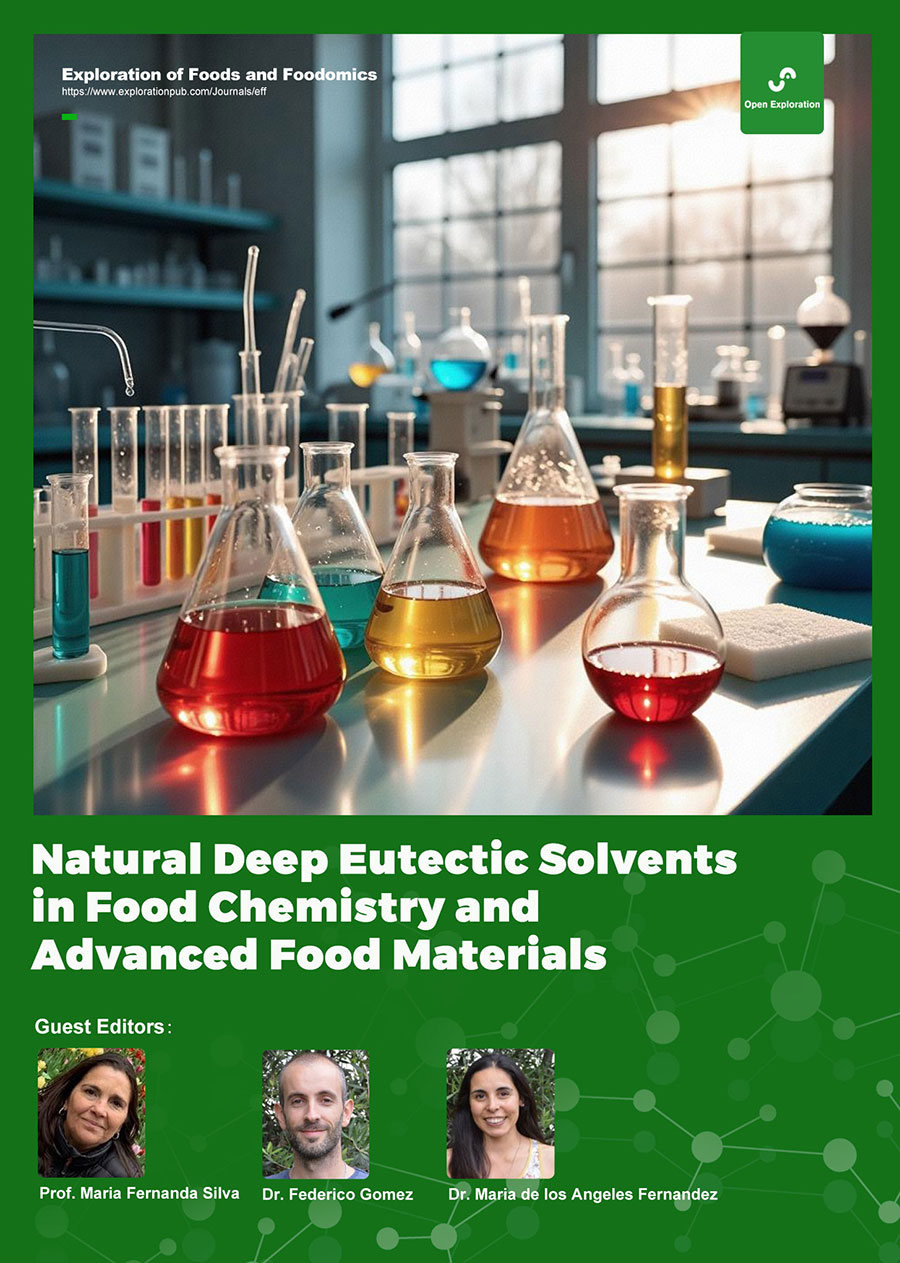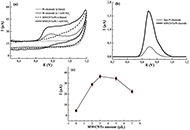
Natural Deep Eutectic Solvents in Food Chemistry and Advanced Food Materials
Guest Editors
Maria Fernanda Silva E-Mail
Associate Professor at Faculty of Agricultural Sciences, National University of Cuyo (FCA-UNCuyo), Chacras de Coria, Mendoza, Argentina
Research Keywords: green analytical chemistry; sample preparation; food chemistry; natural deep eutectic solvents; separation techniques
Federico Gomez E-Mail
Instituto de Biología Agrícola de Mendoza (IBAM-CONICET), Facultad de Ciencias Agrarias, Universidad Nacional de Cuyo, Mendoza, Argentina
Research Keywords: mass spectrometry; sample preparation; liquid chromatography; analytical method development; solid phase extraction
Maria de los Angeles Fernandez E-Mail
Instituto de Biología Agrícola de Mendoza (IBAM-CONICET), Facultad de Ciencias Agrarias, Universidad Nacional de Cuyo, Mendoza, Argentina
Research Keywords: analytical chemistry; antioxidant capacity; food characterization
About the Special lssue
Over the past two decades, eutectic mixtures have been extensively explored as green alternative liquid media to traditional organic solvents and are applicable in a wide variety of industries targeting sustainable chemistry. The word “eutectic” comes from the Ancient Greek εὔτηκτος which means easily melted. A eutectic point represents the chemical composition and temperature at which a mixture of two solids becomes fully molten at the lowest melting temperature, relative to that of either compound. Natural Deep Eutectic Solvents (NADES) are composed by cellular constituents such as sugars, alcohols, amino acids, organic acids and choline derivatives, representing a breakthrough in the field of Green Chemistry. They offer numerous advantages including biodegradability, low toxicity, solute stabilization, sustainability, low costs and simple preparation. Furthermore, NADES are compatible with every step of the Total Analytical Process. Considering NADES are composed of food-grade ingredients that would not need to be removed before use, they represent an attractive alternative for the nutraceutical products field. Additionally, NADES can enhance physico chemical and biological properties of the materials, including stability, texture, strength, stiffness, toughness, durability antioxidant and antimicrobial properties. Thus, it is possible to design advanced functional materials mediated by Natural Deep Eutectic Systems for use in the food and pharmaceutical industries. These materials may include a range of products such as packaging, edible films, coatings, nanoparticles and hydrogels. The main aim of this issue will be to contribute innovative topics of the application of NADES in food chemistry and food materials.
In this very wide context, we invite investigators to submit both original research and review articles that explore all these aspects.
Keywords: eutectic solvents; food chemistry; food materials; edible films
Published Articles
